
The Perfect Partner Bodyweight Workout!
If you and your training partner are looking for a challenge, you're in luck! This partner-based bodyweight routine will help you grow—and tackle more advanced moves.
Intrinsic motivation is crucial for fitness longevity, but so is community—and fun. When you have the opportunity to work out with a friend or training partner, there are definite benefits to be gained by taking it! Having someone there to give you that extra push can help motivate you to do more than you would by yourself in your garage with nobody watching.
But it doesn't end there. Your partner can actually lend their body weight to help you do more with your training! They can make movements like push-ups or rows more difficult—in a good way—while making other advanced movements like pistols and shoulder stands more manageable.
So what are you waiting for? Go grab a friend and try some of the partner moves below!
Wheelbarrow Push-up
Get into a plank position with your partner holding your ankles. Keeping your hands below your shoulders, carefully lower your chest toward the ground and press yourself back up.
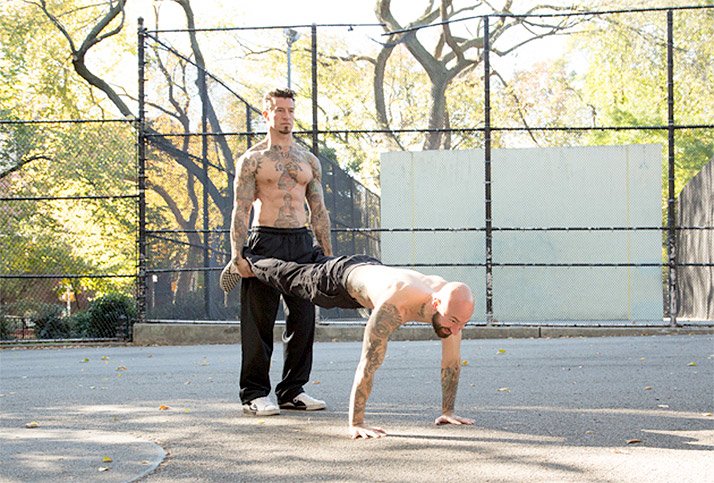
Wheelbarrow Push-up
In addition to turning your regular push-up into an incline version, there's a significant amount of instability created by having your partner hold your ankles instead of letting your feet rest on a stable surface. The farther from the floor that you get, the more unstable and challenging the move becomes. When your partner holds you up higher, it puts more of your weight in your hands.
If your partner holds you up high enough, you can even turn it into a pike press-up or handstand push-up to crank things up another notch.
Wheelbarrow Row
Hang beneath a low pull-up bar or other apparatus that is about chest height and have your partner hold your ankles. Keeping your body horizontal, begin to pull yourself up while your partner grips your feet.
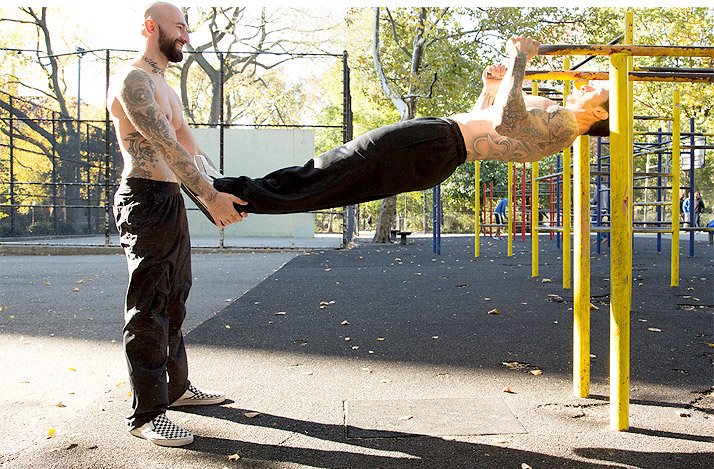
Wheelbarrow Row
Again, the instability caused by your partner supporting you, rather than using a stable base, will add a significant challenge. Just like the wheelbarrow push-up, the higher your partner holds your feet, the more difficult the exercise becomes.
Fireman's Carry
Who says bodyweight resistance training necessarily has to be your own body? For this exercise, you and your partner will take turns using one another for resistance.
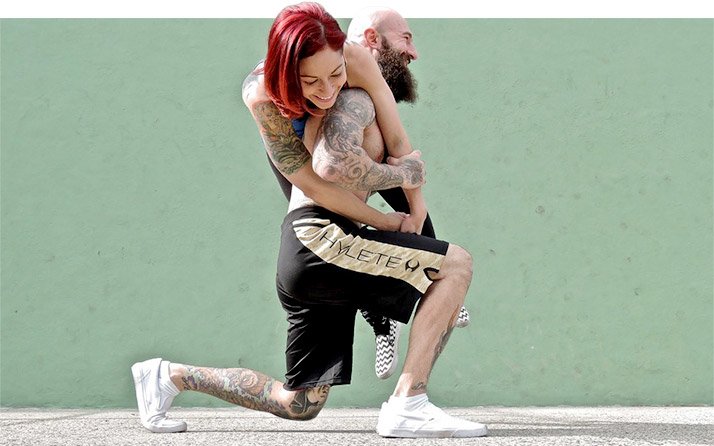
Fireman's Carry
Carefully lift your partner onto your back by reaching between their legs and laying them across your shoulders like you would hold a barbell for a back squat. Brace your core to maintain your posture as you begin walking with their entire body weight supported in this manner.
Perform this exercise for time and/or distance, then switch partners. For an added challenge, you can perform squats or walking lunges with your partner in this position.
Leg-Raise Throw-down
Lie on your back with your partner standing over your shoulders. Grab their ankles for support and perform a straight-leg raise, lifting your lower back slightly off the ground at the top of the range of motion. Make sure your partner is bracing themselves to avoid tipping over. A slight bend in the knees may help facilitate this.
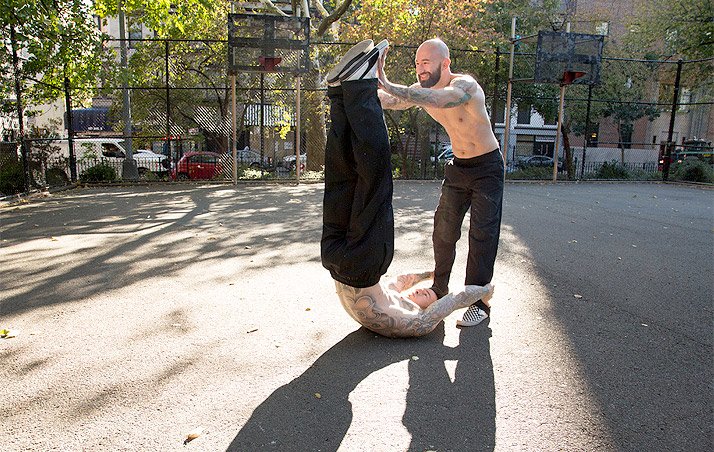
Leg-Raise Throw-down
As you reach the apex of your leg raise, have your partner push your legs back down to the ground. Do your best to resist your partner's push and stabilize the movement on the way back down. As you get more comfortable, you can have your partner provide a more aggressive push.
Make sure you communicate with your partner to let them know if they should push harder or if they need to back off.
Partner Pistol
In this modification of the pistol squat, you and your partner provide increased stability for each other as well as a counterbalance, making this difficult single-leg squat a more manageable task for you both. The partner pistol can be a very useful step toward achieving an unsupported pistol.
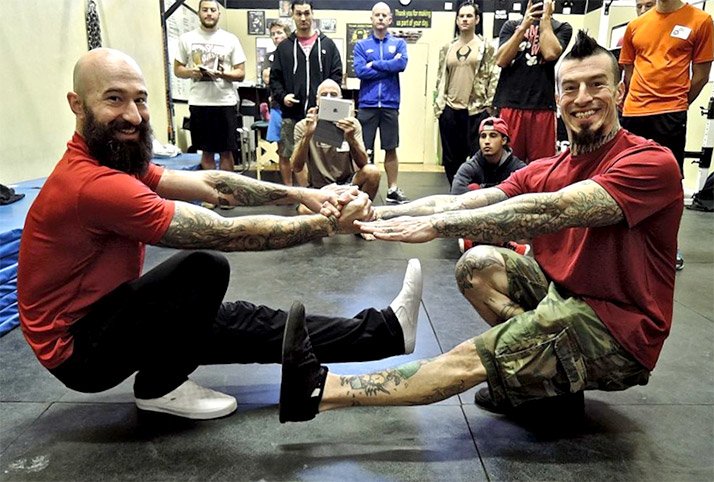
Partner Pistol
Face your partner and clasp hands while you both lift one leg in the air and extend it in front of your body. Make sure you both lift the same leg so you don't kick each other. You may also need to stagger your stance a bit to avoid getting in the way of one another. From this position, both of you will lower down into the deepest single-leg squat you can manage, using your partner to maintain stability and balance. Make sure to go slowly and avoid using momentum to drop down.
Pause briefly at the bottom, then squeeze your partner's hand, clench your abs, and drive the heel of your squatting leg into the floor to stand up. When you finish one side, switch and repeat on the other leg.
Supported Shoulder Stand
Lie on your back with both arms extended over your shoulders, your feet elevated, and your knees bent. Have your partner grab your knees (or just below your knees) and rest their upper traps and shoulders in your hands. Keep your elbows locked, and press away from your chest like you are locking out a push-up as your partner shifts their weight into your hands. Your partner's objective is to lift themselves into a full inversion, supported only on your knees and hands.
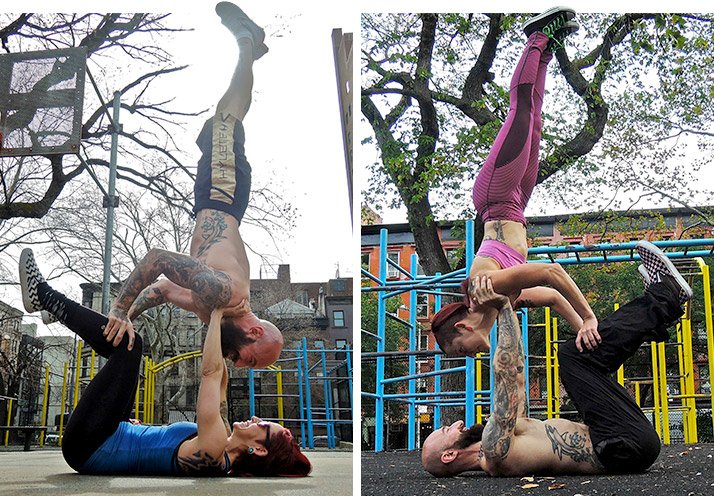
Supported Shoulder Stand
I encourage you to try being on both ends of this move, as each person has a unique role in the exercise. When you are the person on top, focus on using your core strength to lift your hips over your partner's shoulders in order to get your legs into position. It helps to be able to perform a headstand on the ground before attempting this move.
This exercise is all about communication and working as a team. Both parties must use their entire bodies in distinct ways to pull this off properly. Take it slow and have fun!
Partner Back Bridge
There are two ways you can approach the partner back bridge. If you are currently unable to perform a full back bridge, you can have your partner provide assistance by applying pressure between the shoulder blades and gently pulling you deeper into the hold while you grab onto their ankles. If you are the one providing assistance, make sure to do so gradually. This can be an intense stretch, and you want to be careful that you don't go too far, too fast.
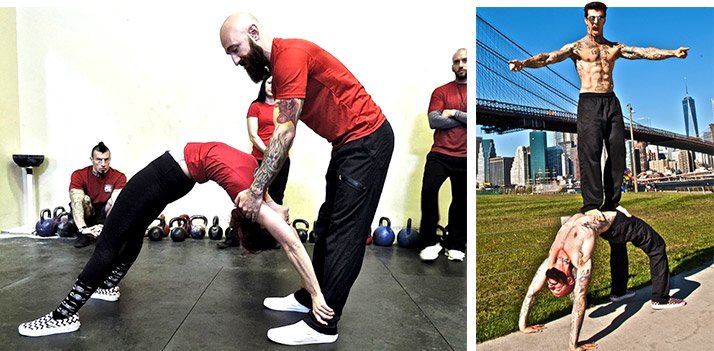
Partner Back Bridge
On the other hand, if you can already perform a full bridge, you can use your partner to provide additional resistance by pressing down on your hips. If you are the one providing resistance, do your best to keep it even on both the left and right sides of the body. With practice, you can eventually build toward taking your partner's entire body weight!
We're Working Out!
With the exception of the partner pistol, each of these exercises demands two different jobs. Make sure you take turns alternating on every exercise so that both of you have an even amount of time on both sides of the equation.
Here's one way you could structure these exercises for a fun partner-training session. Grab a buddy and give the workout below a shot!

